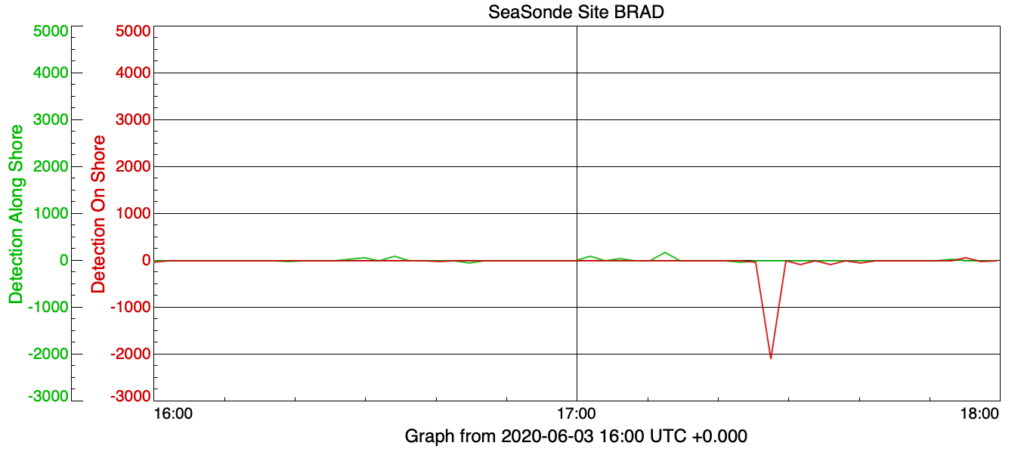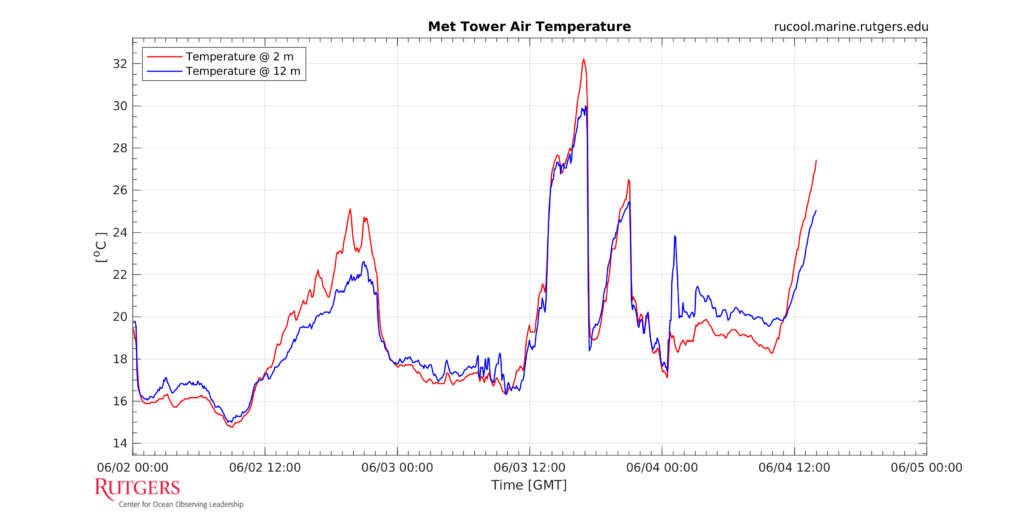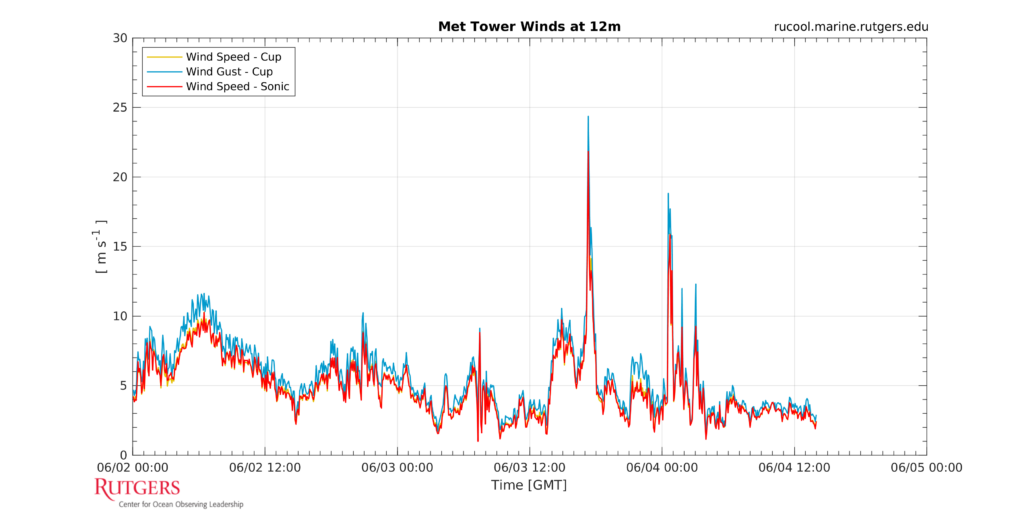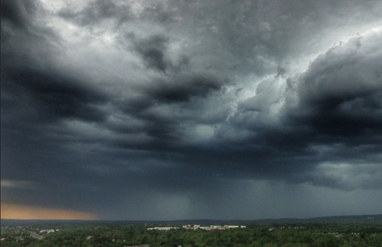Rutgers scientists observed the ocean and atmospheric response to a derecho that passed through NJ and caused severe damage in several towns. A Rutgers meteorological tower in Tuckerton NJ recorded a peak wind gust of 54 mph alongside a 21-degree temperature drop in only 15 minutes. The HF-Radar station at Bradley Beach, NJ, part of the larger Mid-Atlantic Regional Association Coastal Ocean Observing System network, detected a surface disturbance at 1:20 pm local and the station in Brant Beach registered a similar response thirty minutes later at 1:50 pm local. This time delay was the result of the southeast track of the storm first reaching the northern station at Bradley Beach and then reaching the southern station in Brant Beach. This event is similar to another a meteotsunami that Rutgers detected in 2013 which sent several people to the hospital. NOAA estimates that 25 meteotsunamis impact the east coast of the United States each year.

Tsunami detection q-factor from the Bradley Beach HFR station. The station recorded a tsunami signal at 17:27 GMT.

Tsunami detection q-factor from the Brant Beach HFR station. The station recorded a tsunami signal at 17:50 GMT.

Plot of air temperature at the Rutgers meteorological tower located in Tuckerton, NJ. The station recorded a 14-degree C (21 degrees F) drop in temperature in only 15 minutes.

Plot of wind speed and gusts at the Rutgers meteorological tower located in Tuckerton, NJ. The station recorded a peak gust of 54 mph at 17:18 GMT.

Plot of atmospheric pressure at the Rutgers meteorological tower located in Tuckerton, NJ. The station recorded a 3 mb pressure spike which is associated with the formation of meteotsunamis.
Main photo credit nj.com

